Mitosis and meiosis (cell division) (A-level biology)

Cell division
Specific objectives
The learner should be able to:
- Describe mitosis and meiosis
- Compare mitosis and meiosis
- Explain the significance of the changes in the nucleus during cell division
- State the significance of mitosis and meiosis to living organisms.
- Identify stages of mitosis from prepared slides
- Draw cells at different stages of mitosis and meiosis
Overview
Growth, reproduction, and replacement of old cells involve the multiplication cells. In order to multiply cells under cell division: there are two types of cell division.
Mitotic cell division
This type of cell division; leads to the formation of two daughter cells each with exactly the same number of chromosomes as the parent cells.
Mitosis takes place in five stages. Interphase, prophase, metaphase, anaphase, and telophase. At each of these stages certain crucial events take place, particularly in regards to chromosome. It is a continuous process that takes about an hour.
(i) Interphase
It is some times described as a resting stage. During this stage, there is protein synthesis, the formation of organelles, and the replication of DNA. It also builds up a sufficiently large store of energy to carry the cell through the remaining stage of mitosis.
During interphase, the chromosomes are not visible or distinct bodies either under a light microscope or electron microscope. Just before mitosis begins the centrioles are among the most prominent organelles in the cell.
(ii) Prophase
- Early prophase
Chromosomes become visible as they contract, and the nucleus shrinks, centrioles move to the opposite sides of the nucleus. Spindle fiber starts to form
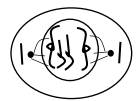
- Late prophase
Chromosomes become shorter and fatter-each seen to consist of a pair of chromatid joined at the centromere. Nucleolus disappears. Prophase ends with the breakdown of the nuclear envelop.
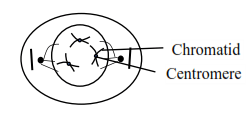
(iii) Metaphase
Chromosomes arrange themselves on the equator of a spindle

(iv) Anaphase
Chromatid separate and migrate to opposite pol of the cell. The centromere leading
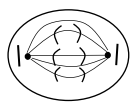
(v) Telophase
Chromosomes unwound. Nuclear envelope and nucleoli form.

The two silent features of mitosis that ensure that the chromosome constitution of the cell is preserved are
- DNA replicates before mitosis
- The chromosomes arrange themselves at the equator before migration to the opposite side.
Importance of mitosis
- Genetic stability: It ensures that the daughter cells carry the exact genetic material as the parent cells
- Growth: growth results in an increase in the number of cells by mitosis.
- Body repair: worn-out cells are replaced b the cells produced by mitosis
- Asexual reproduction
Meiosis
This is a type of cell division where each parent cell divides into four haploid cells. This leads to the formation of gametes. By having the number of chromosomes prior to fertilization, meiosis ensures that the zygote has the normal diploid condition
Meiosis occurs into two successive divisions, the parent cell splits into two (first meiotic division) and the product then divides again (second meiotic division) giving a total of four daughter cells.
Stages in meiosis
Meiotic division 1
(a) Interphase
Cells in normal non-dividing conditions with chromosomes long and threadlike.
(b) Prophase 1
This is the longest phase and is subdivided into 5 stages
- Leptotene
- Zygotene
- Pachytene
- Diplotene
- Diakinesis
- Leptotene
The chromosomes are single, long and scattered
- Zygotene
The single chromosomes begin to pair up with homologous chromosome the process called synapsis and each pair is called a bivalent

- Pachytene
Chromosomes become intimately coiled around each other. The chromosomes replicate into chromatids that move slightly apart. The chromatids of homologous chromosomes remain in contact at certain points called the chiasmata. The chiasmata are the site of genetic exchange called crossing over.

- Diplotene
Chromosomes in the bivalents begin to separate but remain joined at the chiasmata in each bivalent. The number of chiasmata in each bivalent varies but they tend to be more on long chromatids.
- Diakinesis
Internal coiling continues and the bivalents are the most contractive stage.
(c) Metaphase 1
The homologous chromosomes (bivalents) arrange themselves opposite each other on the equator of the spindle
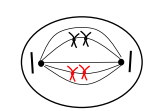
(d) Anaphase 1
The homologous chromosomes each made up a pair of chromatid joined at the centromere move towards opposite pole of the spindle. The sister chromatids also separate from each other’s along their length except at the centromere.
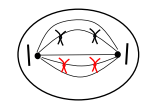
(v) Telophase 1
When the chromosomes reach their respective pole, the cell start to divided across the middle, and as in mitosis, nuclear envelop form around the two new nuclei
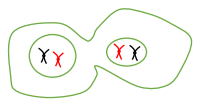
Meiotic Division II
Separation of homologous chromosomes that make up a bivalent is achieved by the first meiotic division. The purpose of the second division is to separate the chromatids from one another
Prophase II
The two daughter cells prepare for the second meiotic division: centrioles have replicated and a new spindle is formed.
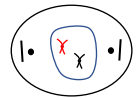
Metaphase II
The chromosomes move to the equator of the spindle, the chromatids orienting towards opposite pole.
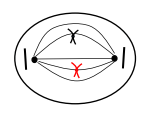
Anaphase II
Chromatid separate and move apart from each other

Telophase II
When the chromosomes reach the end of the spindle the cell divides, the spindle apparatus disappear and chromosome begin to regain their threadlike form. New nuclear envelops and nucleoli form.
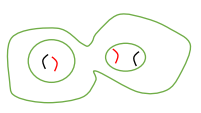
Significance of meiosis
- Sexual reproduction: Meiosis results in half the number of chromosomes, during fertilization the nuclei of the two gametes fuse to form a zygote restore the diploid number of chromosomes for its species.
- Genetic variation: Meiosis provided opportunities for new recombination of genes to occur in the gametes and offsprings in two ways
- Crossing over
- Independent assortment i.e., random distribution of chromosomes into the gametes at metaphase 1
Differences between mitosis and meiosis
| Mitosis | meiosis | |
| 1. | Homologous chromosomes remain separate | Homologous chromosomes pair up |
| 2 | There no crossing over | Crossing over occurs |
| 3. | No formation of chiasmata | Formation of chiasmata |
| 4. | Single division | Two series of division |
| 5. | Results into two diploid daughter cells | Results in four haploid daughter cells |
| 6. | Occurs in somatic cells | Occurs in gonads |
For questions and answers download PDF below.
Sponsored by The Science foundation College + 256 753 80 27 09
Compiled by Dr. Bbosa Science

You have a talent for making things clear. Computer & Accessories
Thanks for providing such valuable insights. Indian Football